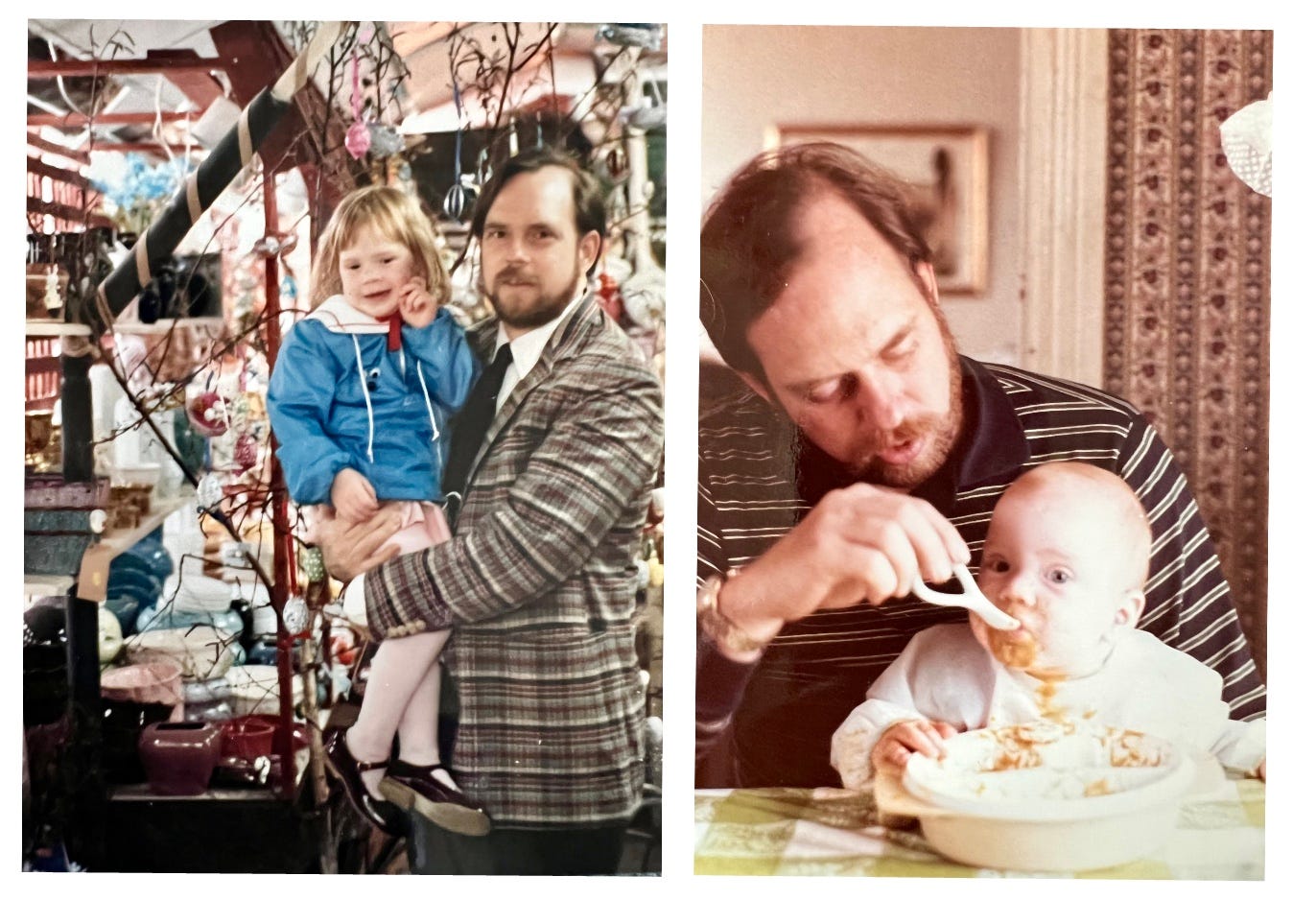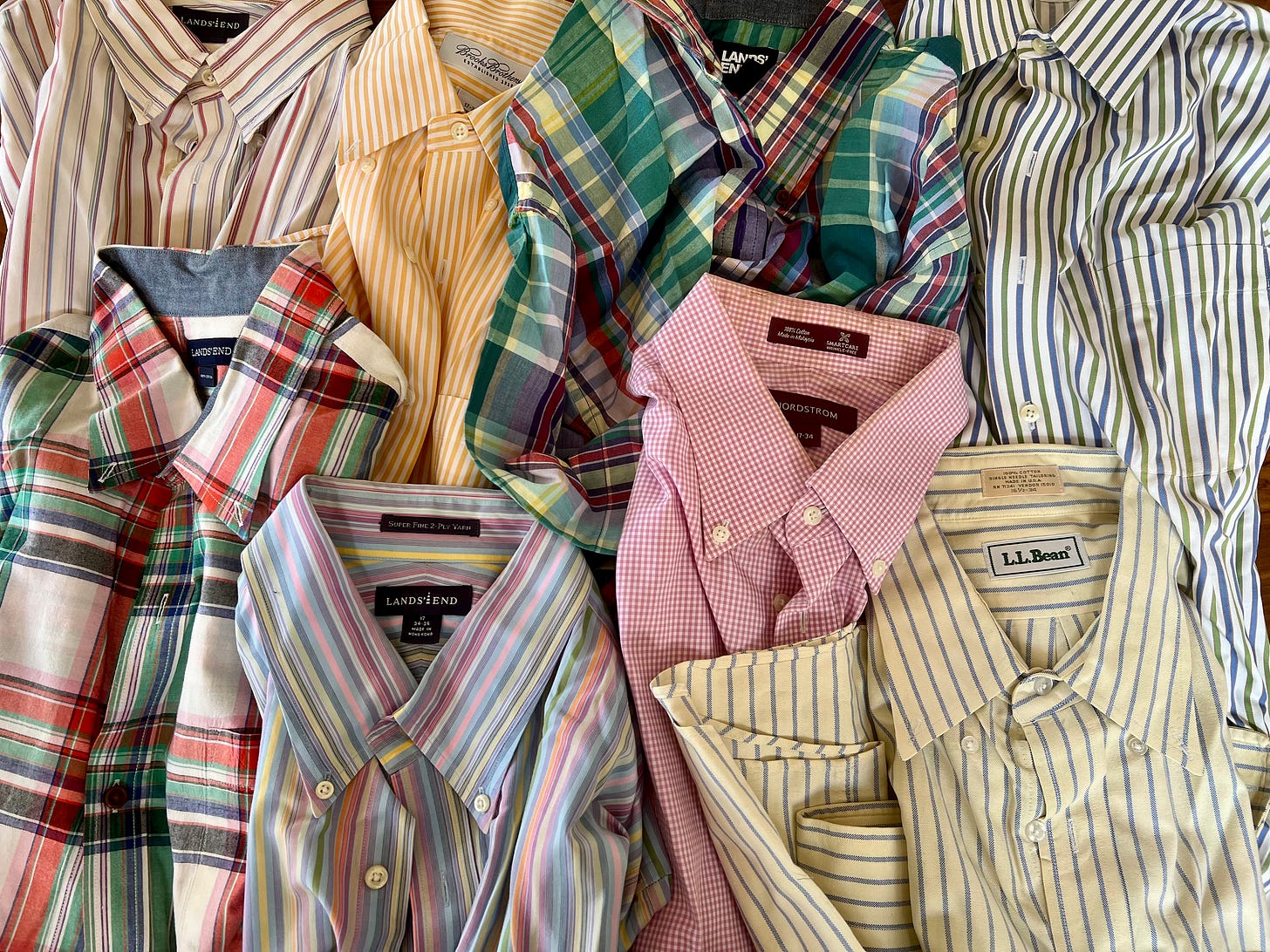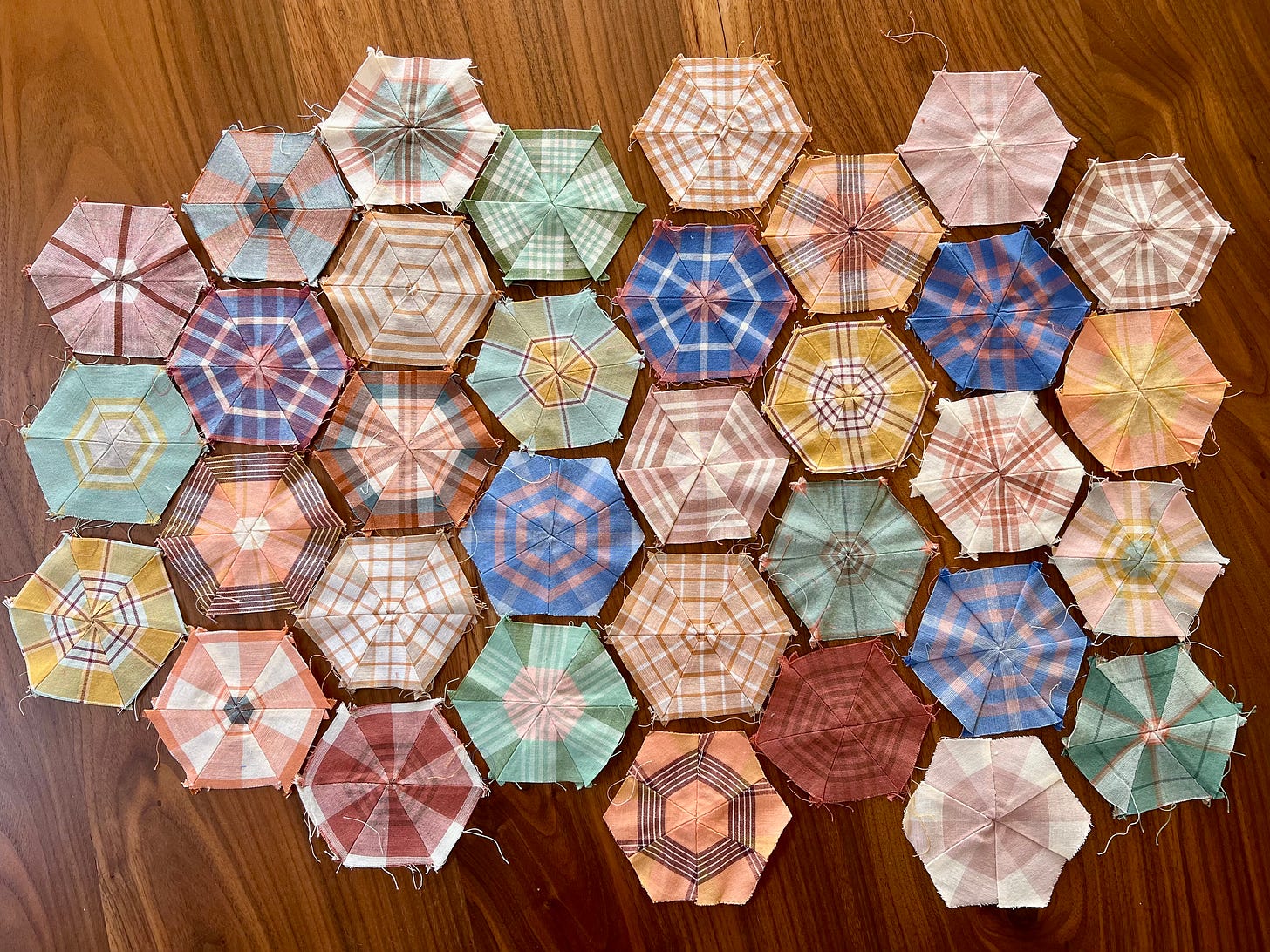I’ve noticed an uptick in articles about “grandma hobbies” in the last few weeks, the most recent from Forbes. They all recycle the same punchlines, claiming that hobbies associated with our stereotypical grandmothers (sewing, knitting, crochet, etc.) have a variety of health benefits:
They encourage “slowing down” in a fast-paced, digital age. These hobbies are “calming” or “soothing.”
They nurture emotional well-being. Finished projects are satisfying and give the maker a sense of accomplishment. Furthermore, these activities are all rooted in the present-moment, so they encourage mindfulness.
They boost cognitive health and brain function with skills like focus, memory, dexterity, and problem-solving.
In the maker community, these articles have largely been well-received because they describe what we already know is true: hobbies like sewing and needlework make us feel good. Particularly in times of anxiety or uncertainty (or, you know, the global economic chaos caused by one’s own government), making something with your hands can be an effective coping mechanism when your mind is spiraling.
I agree with almost everything that these articles claim1, but there is much more here beneath the surface if we look closely. The authors miss what I think is the most important benefit of being a sewist: Sewing creates meaning in our lives.
In other words, my sewing practice is not only a way to calm myself after a busy day or keep my brain sharp as I age. It’s not only about the satisfaction of having a closet full of well-fitting pants to wear, although I admit that is an excellent benefit. For me, on the deepest level, sewing is how I express myself and affirm who I am. It is a way to feel at home in my body, which is something that I will never take for granted. Sewing is also a way to interpret my inner experiences like joy, beauty, or grief and then manifest them in the physical world. If I share my work, I open the door to connection and community, making my experience even richer.
Whatever the format—quilts, garments, embroidery, soft sculpture, etc.—sewing is how we reinforce what is most important to us and who we are. It is a form of communication as vital as any other, especially in times of turmoil and uncertainty. I wish someone at Forbes would write an article about that.
Let me share an example:
I lost my dad to Alzheimer’s a few years ago. The week after he passed, I decided to make a quilt using his vast collection of colorful shirts, which were his signature style for as long as I can remember. He was an engineer and a statistician, so he wore checks, stripes, and plaids almost exclusively; he said they reminded him of his bar charts and graph paper.
Going through his wardrobe and planning the quilt helped me through the darkest stages of my grief. I decided early on that I would hand sew the entire thing. It felt like the right decision because I would get to spend more time touching each piece of shirt fabric while working. Also, at that time I was staying in my childhood bedroom, sleeping beneath an exquisite double wedding band quilt that my mom had sewn completely by hand in college. So hand sewing felt like a connection to both of my parents.
I’m still in the early stages of making this quilt, and it might be a decade before I finish it, which is ok with me. I am taking it slowly, cutting into each shirt only when it feels right. In the meantime, I’m piloting a few ideas with scrap plaids in my stash. When I need inspiration, I like to take dad’s shirts out and just spend a little time with them. I run my fingers over the worn collar points and the occasional coffee stain. I can still smell the cedar and mothballs from his closet if I get close enough.
Sewing this quilt is much more than just a soothing activity or an opportunity to focus my mind. It’s a love letter. It’s my way of holding on to my dad here in the physical world and honoring his presence in my life. Each stitch says thank you, or I love you, or I remember.
Once the quilt is finished, wrapping myself up in it will be a tangible way to hold on to the feelings of love and comfort that he always provided (both he and I were big fans of bear hugs). It will be a reminder that I will always carry him with me, and that he matters to me more than just about anything.
If you are a sewist, no doubt you have sewing projects that mean as much to you, too, whether it’s a quilt, a pair of jeans, or some other soft and miraculous thing. One of my long term goals for this newsletter is to highlight maker stories and explore all the different ways that sewing creates meaning for us. So if you feel like sharing a sewing project that matters to you, I’d love to hear about it.
Of course I would never expect the staff writers at Forbes or other pop culture magazines to understand any of this without being sewists themselves. I know that these articles were mostly written for clicks and shares, and that it’s easy to dismiss sewing as just a quaint, domestic hobby. Sometimes I even find myself slipping into that mindset, too — downplaying how important my sewing practice is to non-sewing friends, or feeling embarrassed when a work colleague finds my Instagram account, for example. So it’s worth remembering that sewing is just as profound and essential as any other form of creative expression. Sewing is how we find purpose and make a meaningful life, and we should always celebrate that.
In my next newsletter, I’ll share a few authors who are exploring this topic even further. Get your library cards ready…
Until next time,
Stacey
Is it just me, or does the term “grandma hobby” really rub you the wrong way, too? It’s as if we are supposed to be surprised that anyone would want to emulate an older woman’s activities. Out of all of these copycat articles, Forbes in particular seems the most snide and even underhanded at times, acknowledging that these hobbies are good for us, but in the same breath calling them “outdated” and “simplistic.” But whatever, it’s Forbes, so of course they don’t get it.









Yes! After 25 years of teaching HS math (and AP Stats, yes to graphs and bar charts!), I think we are doing kids a great injustice by not having an hour every day for them to create. For god’s sake, do NOT call it “Home Ec”. Anything that can be shared with the words “Look what I did!” whether it’s music, art, baking, gardening, sewing, carpentry. Give kids a chance to find that one tactile thing that speaks to their heart. Then you can force them into all the Honors and AP classes, but they’ll have something to do when they need to create.
At 68 years old, I’m grandma age although not a grandma or even a mother. It’s a somewhat dismissive description, not by you, Stacy, but by journalists who think they are being clever. Ever hear the fashion term “coastal grandma?”
I started machine sewing at 11; my first dress was an A-line shift. Sewing is my creative outlet, a way to take a flat plane, a piece of fabric, and form it into a garment that fits me.
Well I didn’t mean to go down a rabbit hole but there you go! Keep on sewing🧵